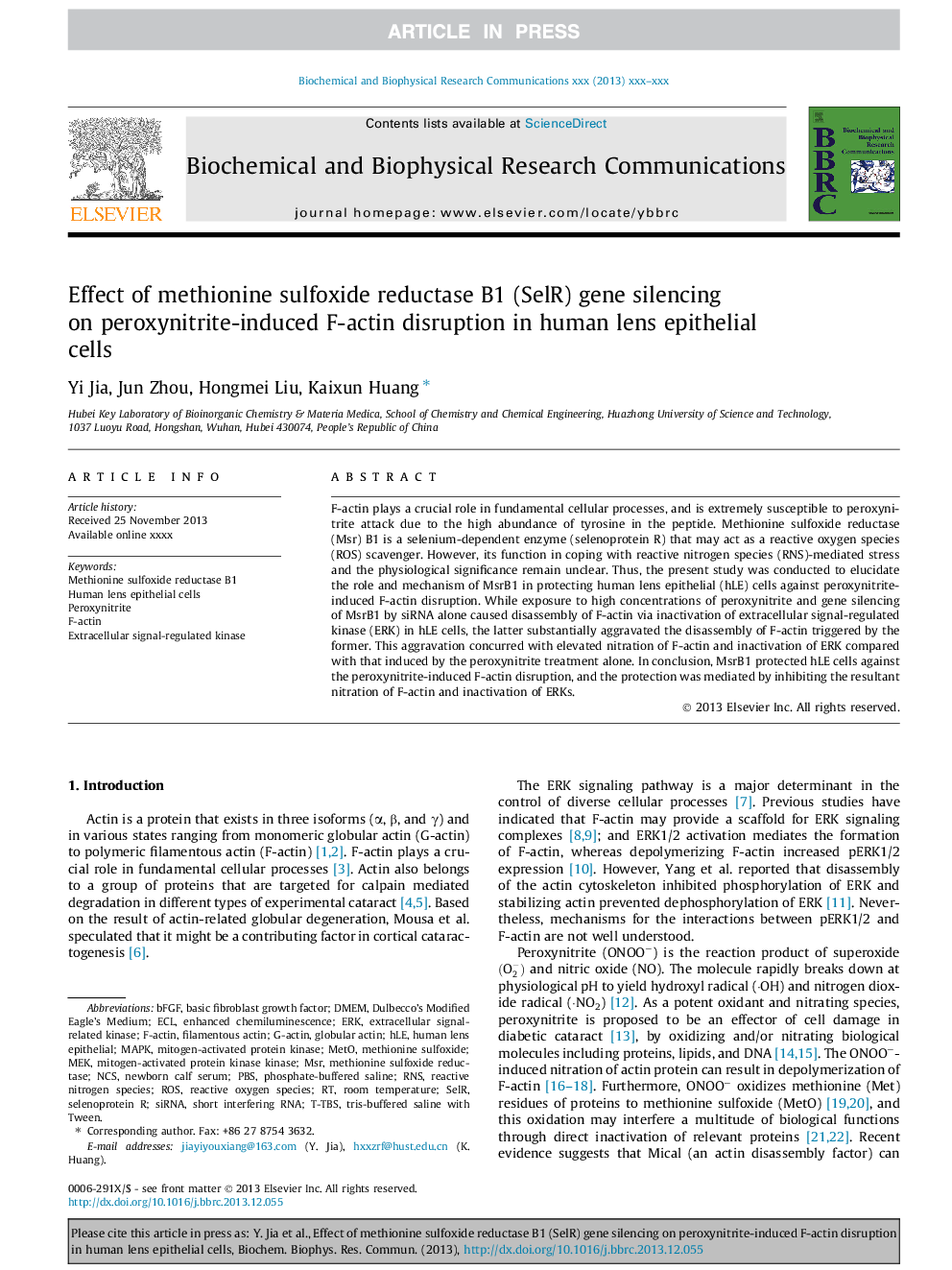| Article ID | Journal | Published Year | Pages | File Type |
|---|---|---|---|---|
| 10757037 | Biochemical and Biophysical Research Communications | 2014 | 6 Pages |
Abstract
F-actin plays a crucial role in fundamental cellular processes, and is extremely susceptible to peroxynitrite attack due to the high abundance of tyrosine in the peptide. Methionine sulfoxide reductase (Msr) B1 is a selenium-dependent enzyme (selenoprotein R) that may act as a reactive oxygen species (ROS) scavenger. However, its function in coping with reactive nitrogen species (RNS)-mediated stress and the physiological significance remain unclear. Thus, the present study was conducted to elucidate the role and mechanism of MsrB1 in protecting human lens epithelial (hLE) cells against peroxynitrite-induced F-actin disruption. While exposure to high concentrations of peroxynitrite and gene silencing of MsrB1 by siRNA alone caused disassembly of F-actin via inactivation of extracellular signal-regulated kinase (ERK) in hLE cells, the latter substantially aggravated the disassembly of F-actin triggered by the former. This aggravation concurred with elevated nitration of F-actin and inactivation of ERK compared with that induced by the peroxynitrite treatment alone. In conclusion, MsrB1 protected hLE cells against the peroxynitrite-induced F-actin disruption, and the protection was mediated by inhibiting the resultant nitration of F-actin and inactivation of ERKs.
Keywords
PBSTRIS-buffered saline with Tweenmethionine sulfoxide reductase B1T-TBSG-actinMetOECLRNSNCSERKF-actinDMEMbFGFMSRfilamentous actinglobular actinMAPKshort interfering RNAROSsiRNAenhanced chemiluminescenceRoom temperaturenewborn calf serumhuman lens epithelial cellsMethionine sulfoxidebasic fibroblast growth factormethionine sulfoxide reductaseMEKPhosphate-buffered salineDulbecco’s modified eagle’s mediumHLEmitogen-activated protein kinasemitogen-activated protein kinase kinasePeroxynitriteextracellular signal-regulated kinaseextracellular signal-related kinasereactive nitrogen speciesReactive oxygen species
Related Topics
Life Sciences
Biochemistry, Genetics and Molecular Biology
Biochemistry
Authors
Yi Jia, Jun Zhou, Hongmei Liu, Kaixun Huang,
